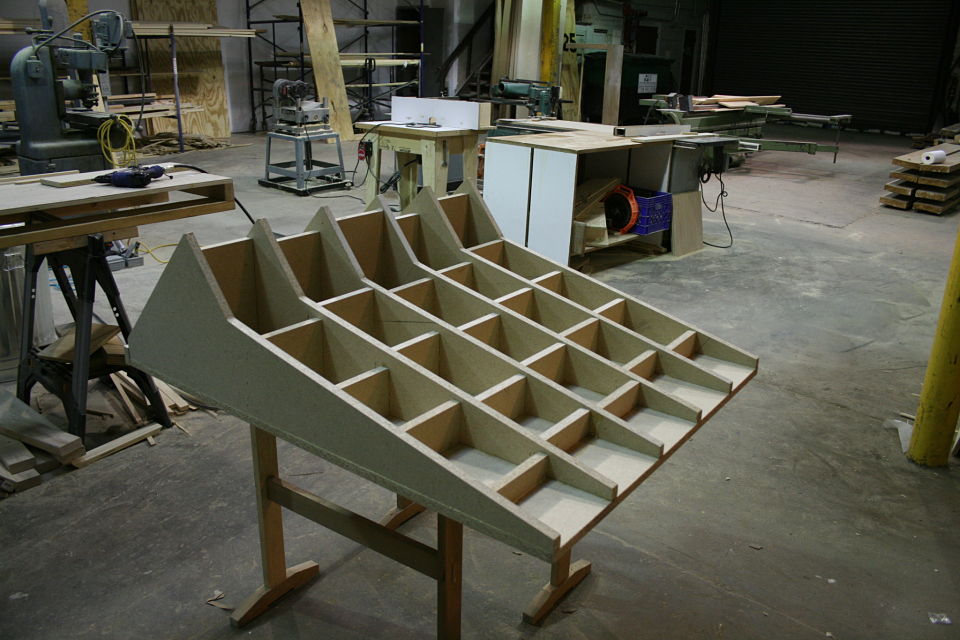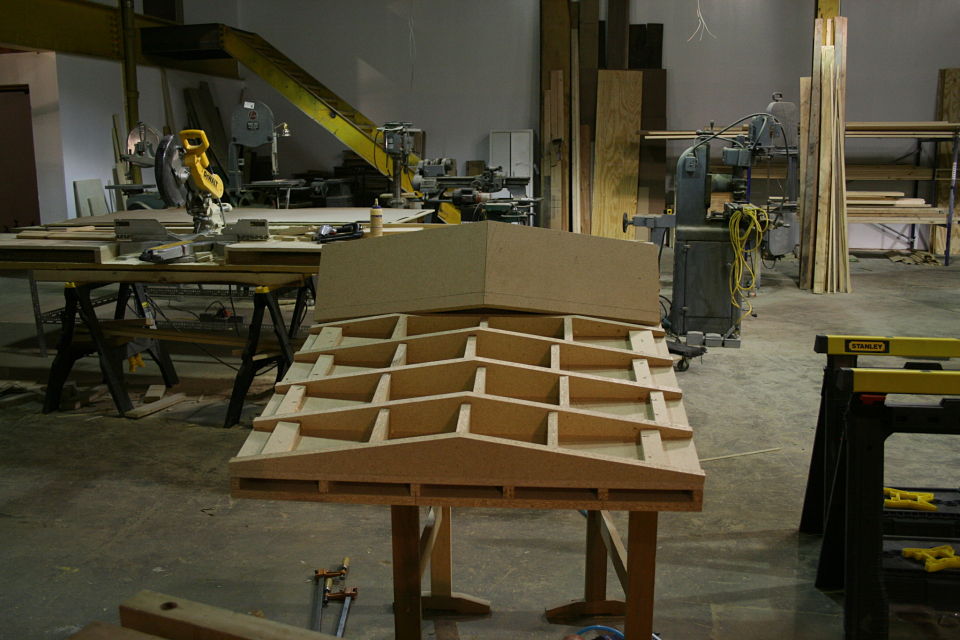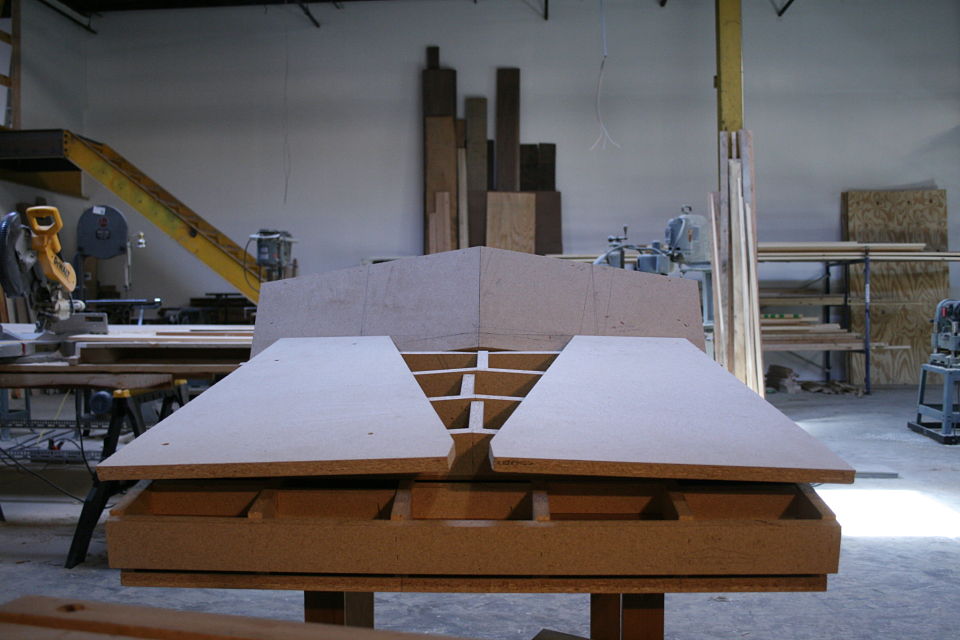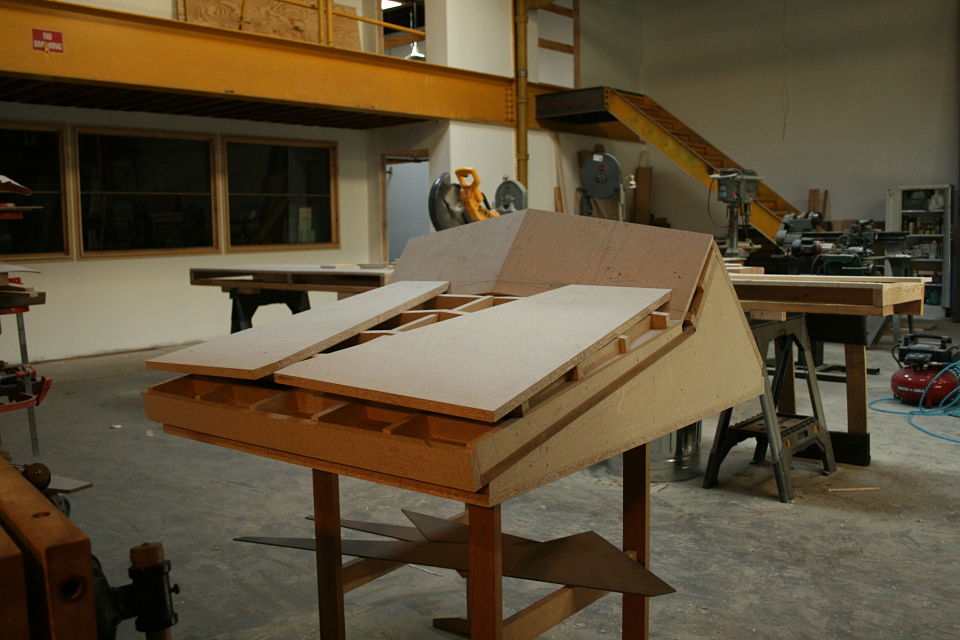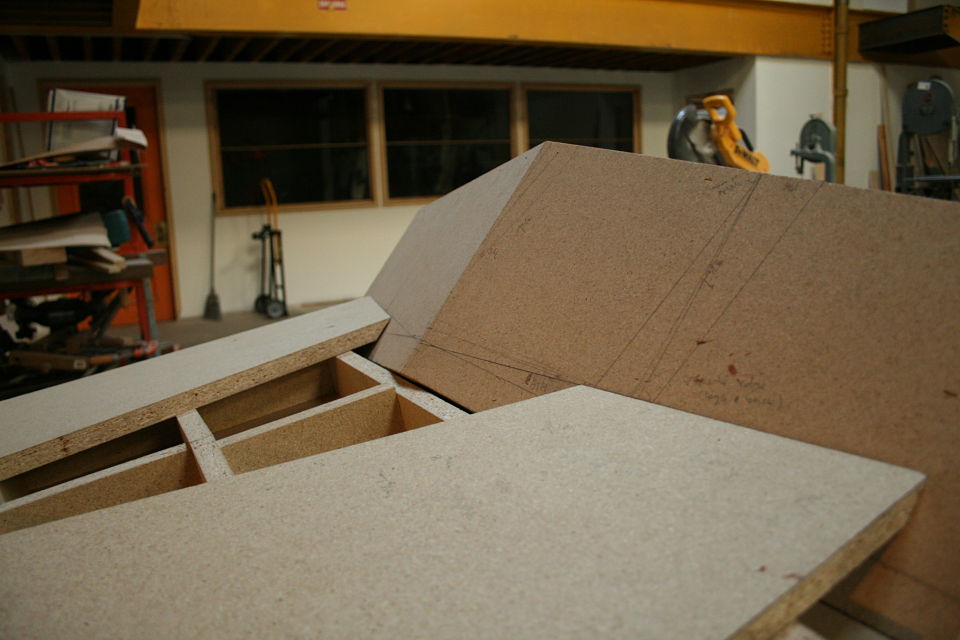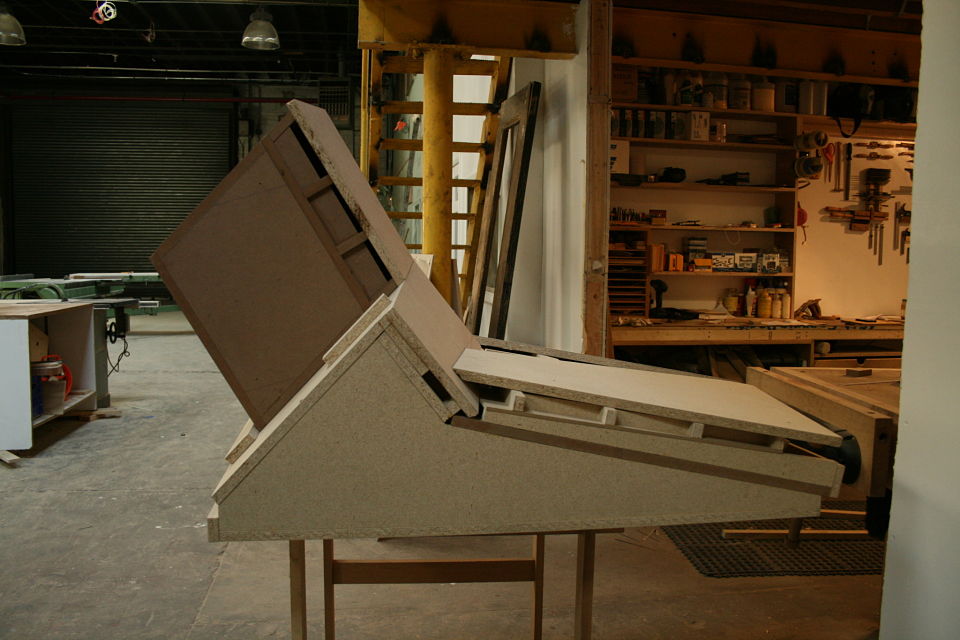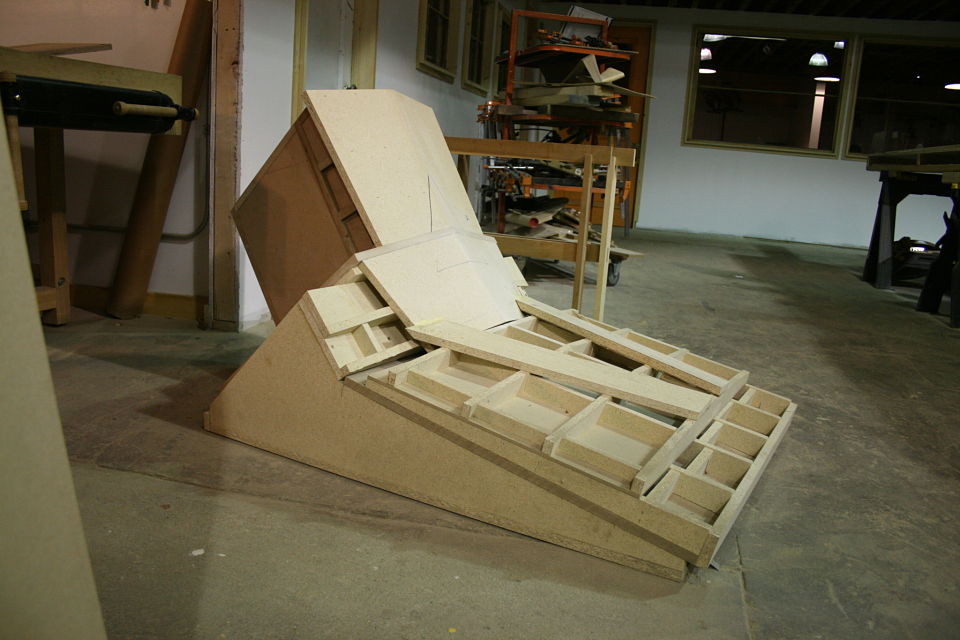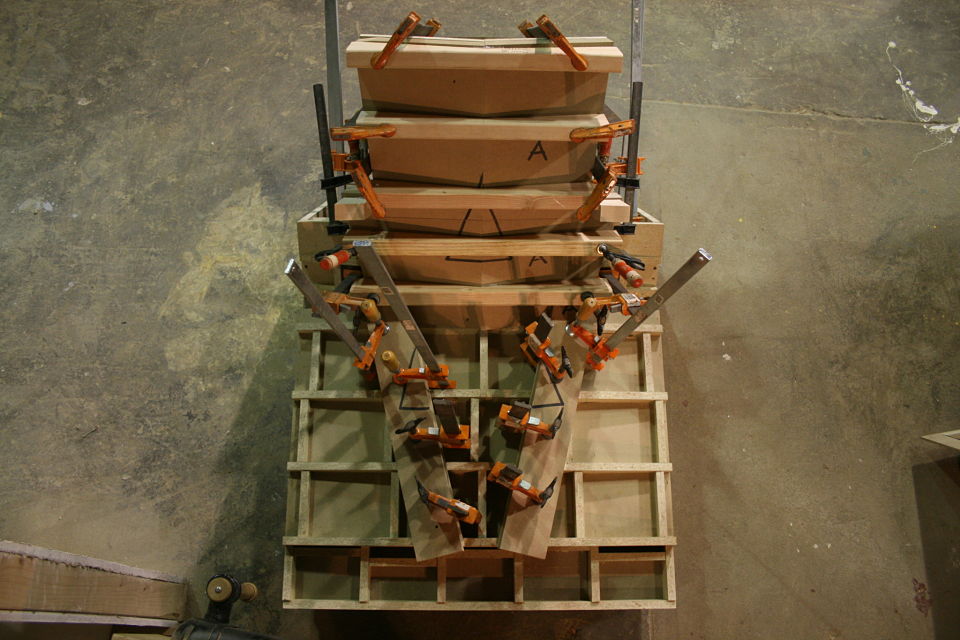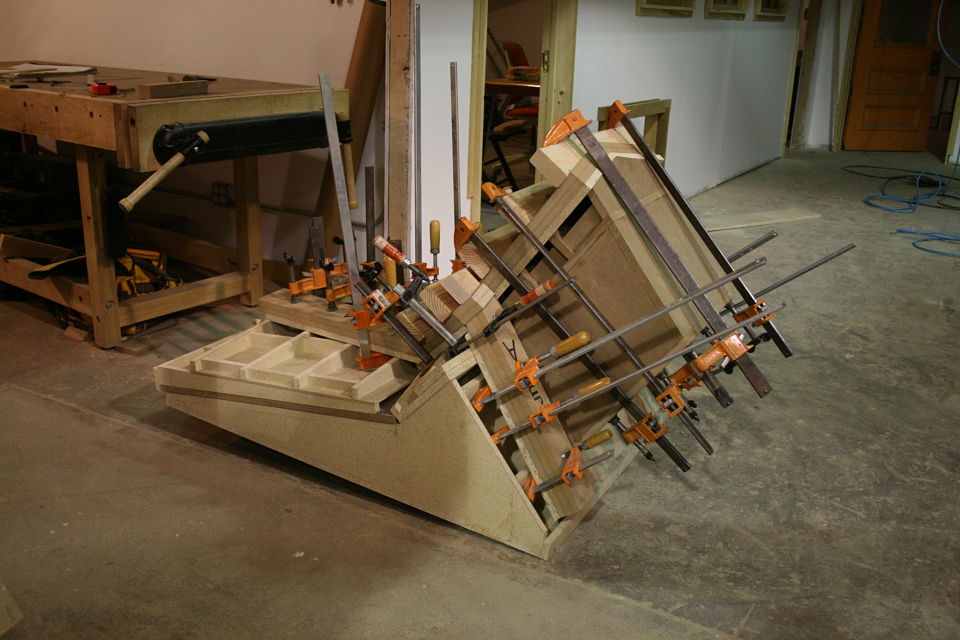With the back legs / armrest and back of the chair pressed on the large original form it was time to sort out how to go about pressing the front legs. Faced with the same dilemma of trying to wrap veneer around the diameter of a pencil I looked for alternative ways to clamp around the curve from my original bends. The solution I came to was using a shim steel strap to create my clamping pressure around the outside of the tight radii.
So as you can see above the shim steel strap is attached to my plywood clamping cauls. It wraps around the far end of the bordering cauls and into a bandsaw kerf which is then covered with a block to keep the strap from slipping.
The 21 layers of veneer were cut to shape, the inside three layers were hot pipe bent around the bar of an F-clamp to prebend the tightest radii.
So you can see in the pictures above the two clamps that are clamping down the length of the cauls on either side of the bend, these are tightened at the beginning of the glue up to pull the strap tight around the corners where the blocks don't cover the lamination.
Like most chairs it required a set of lefts and rights, so two forms with complimentary angles were needed. They turned out better than expected and I was amazed at how well the strap technique worked. On to the seat and then lots of clean up and shaping.















